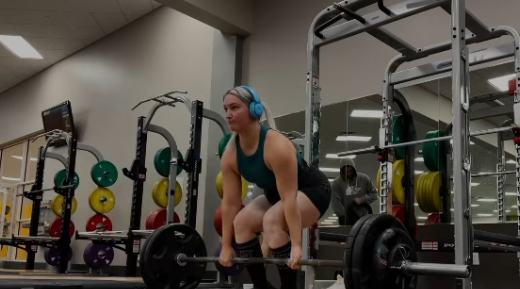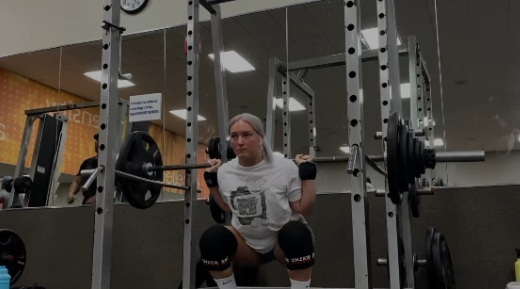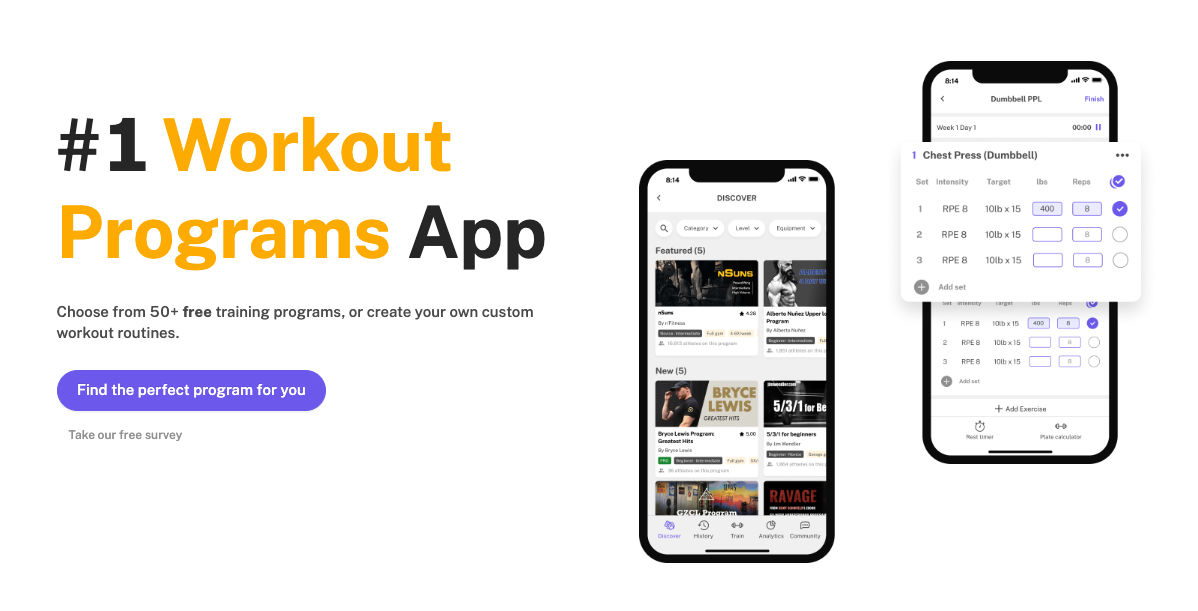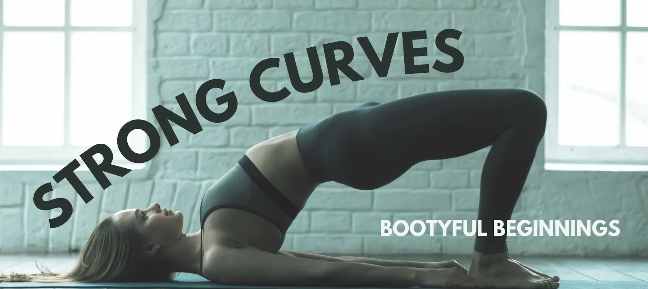The Best Glute Training Routine for Women
Written by The Boostcamp Editors
Glute Training: Workouts for Women
When it comes to women joining the gym and starting to strength train, a lot of them have the goal of growing their glutes, and there is nothing wrong with that! Building a strong, curvy body is not easy however, and it does take time, and effort, to do so. Food and nutrition are huge, as well as supplementation. But a solid training routine may be the most important part of growing your glutes.
While those big compound movements such as squats and deadlifts can be beneficial to the process of growing, you may want something more direct to the glutes. However, training the glutes directly is one of the most important things you can do.
Let’s break down how to properly train the glutes and the best training program you can find to do so.
Understanding Glute Muscles and their Functionality

Glute muscles are not only for looks, but also are crucial for stability, posture, and lower body strength, working together to maintain a straight line from the lower back to the right foot. Exercises like hip thrusts help in strengthening and toning these muscles, playing a vital role in hip extension, abduction, and balance during workouts. Strengthening glutes can significantly improve overall lower body strength and stability, enhancing workout efficiency and contributing to a gradual process of building a bigger butt.
Understanding the functionality of glute muscles is essential for developing an effective glute training routine.
The Role of Glute Muscles in the Body
It does not matter if you are training for a sport like powerlifting, or something like bodybuilding, the glute muscles play a crucial role in maintaining proper posture and stability during everyday activities. They are vital for preventing imbalances and reducing the risk of lower back and knee injuries, contributing to overall lower body strength and stability.
Engaging in glute training can lead to muscle growth, enhancing the strength and endurance of the glutes, quads, and hamstrings. Proper glute training can also aid in hypertrophy, boosting muscle growth in the buttocks and thighs, while improving hip mobility and benefiting the range of motion during exercises.
How Glute Muscles Influence Workout Efficiency
Engaging your glute muscles during workouts can greatly enhance your overall workout efficiency. By targeting and strengthening your glutes, including the gluteus medius, you'll experience improved lower body exercises like squats, deadlift variations, and lunges. Not only will this help with full-body strength and stability, but it will also enhance the power and strength of movements such as hip abduction and deadlifts. Additionally, incorporating glute exercises can address muscle imbalances and boost your overall workout performance.
Comprehensive Guide to Glute Exercises
When focusing on glute exercises, you're aiming for a strong lower body and enhanced stability. These exercises play a crucial role in injury prevention and posture improvement. They even contribute to better performance in your daily activities and other exercises. Additionally, by targeting the glutes, you're also improving core strength and stability which helps in maintaining a balanced muscle growth and range of motion. It's essential to engage in these exercises that specifically target the glutes to achieve all these benefits.
Barbell Hip Thrust: A Key Glute Exercise
Barbell hip thrusts are highly effective for activating and growing the glute muscles. This exercise specifically targets the gluteus maximus, medius, and minimus, providing a comprehensive glute workout. By developing strong glutes, it enhances hip extension and posterior chain strength. Focusing on proper form ensures optimal glute engagement, supporting efficient workouts. Placing your hands lightly on either side of the barbell to balance the weight will be the starting position. Incorporating barbell hip thrusts into a routine can lead to glute hypertrophy and improved endurance, making it one of the best glute exercises for women.
Step-Up: Engaging Glutes Effectively
Engaging the glute muscles effectively through step-ups involves a comprehensive lower body workout, targeting the glutes, quads, and hamstrings. This exercise enhances glute strength, endurance, and stability, contributing to functional movements and balanced muscle development. Adding resistance, like wearing a weighted vest or plate carrier, to step-ups challenges the glutes, promoting muscle growth and strength. By focusing on proper form, step-ups support glute activation and contribute to balanced muscle development. Including step-ups in a workout routine is beneficial for glute hypertrophy, strength, and stability, specifically targeting the left foot. Step-ups are essential for engaging the glutes effectively and promoting overall lower body strength and stability.
Quadruped Hip Extension: Strengthening Your Glutes
Strengthen your glutes, hamstrings, and lower back muscles with quadruped hip extension. This exercise enhances glute activation, endurance, and stability, fostering overall lower body strength. Controlled movements promote glute hypertrophy and muscle growth, maximizing glute engagement by focusing on a straight line from the knee to the hip. Integrating quadruped hip extension supports glute strength, stability, and range of motion. Enhance your workout routine with this effective exercise to achieve optimal glute activation and muscle development.
Exploring Diverse Glute Exercises for Women

Diverse glute exercises are essential for overall lower body strength, stability, and muscle growth. Targeting glutes offers balanced muscle development, enhancing performance and preventing imbalances. Functional movements are promoted through effective glute exercises, such as the butt workout, providing women with a holistic approach to lower body training. Balanced glute workouts aid in improving posture, stability, and reducing the risk of injuries, making them crucial for women's fitness and well-being.
Glute Bridges
Engaging in glute bridges effectively activates the glutes, hamstrings, and lower back muscles, providing a comprehensive full-body workout. This exercise is crucial for promoting glute activation, strength, and stability, leading to improved lower body functionality. Implementing glute bridges with added resistance contributes significantly to glute hypertrophy, endurance, and overall muscle growth. By emphasizing a straight line from shoulders to knees, glute bridges ensure maximal glute engagement, aiding in enhanced strength, stability, and range of motion within the glute muscles. Including glute bridges with hamstrings exercises, such as glute-ham raises, in a regular workout routine is essential for building and maintaining optimal glute strength and stability.
Walking Lunges
Enhancing glute activation and ensuring comprehensive lower body strength, walking lunges engage the glutes, quads, hamstrings, and even the calves. This exercise promotes stability, muscle growth, and functional movement. By maintaining balance and stability, walking lunges efficiently maximize glute engagement and support hypertrophy, endurance, and balanced muscle development. Additionally, incorporating walking lunges enhances glute strength and range of motion, contributing to balanced muscle development and overall lower body stability. It's an effective workout for women looking to engage multiple muscle groups and enhance lower body functionality.
Stationary Lunges
Maximize your glute engagement by incorporating stationary lunges into your workout routine. This exercise targets the glutes, quads, hamstrings, and calf muscles, promoting lower body strength and stability. By maintaining proper form and focusing on a straight line from knee to hip, you can enhance glute activation, endurance, and balanced muscle development. These lunges support glute hypertrophy and improve range of motion, contributing to overall lower body function. Whether you're looking to take a big step towards strengthening, stabilizing, or increasing the flexibility of your glutes, stationary lunges are one of the best glute exercises to achieve those goals.
Advanced Glute Exercises
Advanced glute exercises provide women with a range of challenging and effective lower body workout options. These exercises are designed to promote glute hypertrophy, strength, and muscle growth, targeting the glutes, hamstrings, quads, and lower back muscles for comprehensive lower body training. Incorporating resistance into advanced glute exercises enhances glute activation, stability, and endurance, leading to overall improved performance. By focusing on maintaining proper form and range of motion, these exercises maximize glute engagement, specifically targeting the gluteus minimus, and resulting in a more efficient and effective workout.
Pistol Squats
Looking to take your glute training to the next level? The pistol squat is an advanced move that targets the glutes, quads, and hamstrings, providing a full lower body workout. Mastering this exercise demands balance, strength, and flexibility, making it challenging yet highly effective. With its unilateral movement, the pistol squat helps correct muscle imbalances and strengthens the glute muscles individually. Regularly practicing pistol squats can enhance hip stability, mobility, and overall lower body strength. Remember, using proper form and technique is crucial for injury prevention and maximizing glute activation. Ready to take on this advanced glute exercise?
Single-Leg Romanian Deadlift
The single-leg Romanian deadlift challenges stability, strength, and flexibility, targeting the glutes, hamstrings, and lower back. It enhances hip stability, balance, and individual glute strength while optimizing the mind-muscle connection for growth. This exercise is crucial in preventing lower body muscle imbalances and minimizing the risk of lower back strain. Adding it to your glute training routine ensures maximum glute engagement, aiding in overall strength and muscle mass development. The proper technique and focus on form during single-leg Romanian deadlifts, including keeping a slight bend in the knees, are essential for its effectiveness and safety.
Plié Squat
Elevate your glute training with the ballet-inspired plié squat, engaging the glutes, inner thighs, quads, and hamstrings for a complete lower body workout. By integrating plié squats, you boost lower body muscle endurance, strength, and range of motion, while emphasizing glute and inner thigh activation for muscle growth and toning. Executing the plié squat with a wide stance, similar to a sumo squat, ensures optimal engagement of the glutes and inner thighs, enhancing lower body flexibility, stability, and muscle coordination. Add this graceful yet powerful move to your routine for comprehensive lower body strengthening and conditioning.
The Best Glute Training Program for Women
Now, all of these exercises are great, but finding a program to keep you on a schedule and spaced out enough so you are making gains is the hardest part. That being said, the team at Boostcamp has hand-picked our favorite workout program for women that will help grow those glutes no problem.
Strong Curves: Bootyful Beginnings
Strong Curves: Bootyful Beginnings is a beginner training routine that has been designed specifically for women who want to build a strong, curvy body. Utilizing a 3 days a week frequency, this program has a mix of bodyweight, barbell, and dumbbell exercises. Each workout starts with a glute exercise, such as glute bridge and glute march, and is designed so the women are only in the gym for 45-60 minutes at a time. Strong Curves was designed by Bret Contreras, who is a Sports Science PhD and a long-time trainer who has helped thousands of women build a better body. In addition to the Strong Curves book, Bret has published Glute Lab book, so you could say he is an expert on the topic of the rear end.
If you want to train virtually with Bret, check out Booty By Bret for his strength and conditioning digital subscription program that includes up to 5 workouts per week, exercise library, and community.
Tips to Maximize Your Glute Workouts
Incorporate some gym bag essentials like resistance bands, stability balls, and dumbbells to activate and grow glute muscles effectively. Ensure proper foot positioning, knee alignment, and hip thrusts during exercises for optimal glute engagement. Vary your routine to target different glute muscles, promoting balanced development. Prioritize mind-muscle connection, controlled movements, and full range of motion for optimal activation and growth. Engage the posterior chain, activate glute muscles, and maintain stability for efficient workout sessions.
Correct Form and Technique for Better Glute Activation
To maximize glute muscle activation and minimize injury risk during exercises, focus on maintaining a straight line from head to heel. Properly position the pelvis, engage the glutes, and maintain stability to enhance muscle activation and strength. Optimize glute activation and muscle growth by implementing slight knee and hip bends, along with stability ball exercises. Ensure proper glute activation and muscle engagement by paying attention to shoulder blades, torso position, and hip extension. Emphasize hip abduction, glute bridge, and hip extension movements to further enhance glute muscle activation and strength, especially in the right knee.
The Importance of Consistency in Glute Training
Consistently participating in glute training activities is key to promoting muscle hypertrophy, endurance, and strength development. Regular glute training also helps in preventing muscle imbalances, enhancing stability, and improving overall lower body strength. Establishing a consistent glute workout routine contributes to gradual glute muscle growth, toning, and strength improvement. Sustained glute training efforts lead to improved posture, reduced lower back discomfort, and enhanced glute muscle endurance. Adhering to a regular glute training regimen fosters muscle memory, stability, and efficiency in glute exercises.
Balancing Glute Workouts with Other Fitness Activities
Balancing glute workouts with other fitness activities involves integrating various exercises to enhance overall lower body strength and stability. This includes incorporating yoga, strength training, and hip abduction exercises alongside glute workouts. Combining glute exercises with full-body workouts promotes muscle growth, stability, and balanced lower body development. Additionally, incorporating kickbacks, hip thrusts, and resistance band exercises complements glute workouts for comprehensive lower body training. Furthermore, engaging in a mix of glute-specific exercises and endurance training activities fosters overall lower body strength, stability, and muscle growth. It's essential to strike a balance between glute exercises and other fitness activities to achieve well-rounded lower body strength and development.
Building a Bigger Butt: A Gradual Process
Enhancing the size of your glutes through strength training, resistance exercises, and hip extension movements requires consistency and patience. Achieving gradual muscle growth and glute development necessitates regular glute training, proper nutrition, and muscle endurance exercises. Building a bigger butt involves incorporating a variety of glute exercises, resistance levels, and full range of motion for optimal muscle growth. Consistently engaging in glute training, resistance, and strength exercises contributes to gradual glute muscle hypertrophy, strength, and endurance. Developing a larger butt entails targeting glute muscles, implementing progressive overload, and prioritizing muscle recovery and growth.
The Role of Diet in Enhancing Glute Size
Enhancing glute size and strength relies heavily on consuming a well-rounded diet comprising protein, healthy fats, and complex carbs. The intake of muscle-building foods, vitamins, and minerals supports glute muscle growth, endurance, and recovery. Additionally, maintaining a nutrient-dense diet with adequate protein and hydration promotes glute muscle hypertrophy, strength, and endurance. Balancing calorie intake, macronutrient ratios, and diet quality is crucial for gradual glute muscle growth and development. This comprehensive approach to nutrition plays a pivotal role in supporting overall glute size enhancement and strength.
Does Squatting Every Day Help in Building Bigger Butt?
Squatting every day can have benefits for glute muscle development, but caution is necessary. Overtraining and potential injury risk can result from not allowing enough rest and recovery time. A balanced approach that includes a mix of glute exercises, resistance training, and muscle recovery activities alongside squatting promotes comprehensive glute muscle growth.
More Workout Programs
Now if you are not someone looking to train glutes, you can look for another workout program to help you progress. That being said, check out the Boostcamp App for over 50 FREE programs or even create your own. Boostcamp also allows you to track progress, so you know how to adjust each week.
Glute Training Wrap Up
To sum it up, glute training is crucial for women to achieve overall strength and fitness. Understanding the functionality of glute muscles and how they influence workout efficiency is the first step. Incorporating a variety of glute exercises, such as the barbell hip thrust, step-up, quadruped hip extension, and sprinter lunge, can help target and strengthen these muscles effectively. Advanced moves like the pistol squat, single-leg Romanian deadlift, and plié squat can take your glute workouts to the next level. Remember, consistency and proper form are key to maximizing your results, we recommend the Strong Curves: Bootyful Beginnings program to do so. It's also important to balance your glute workouts with other fitness activities (which Strong Curves does) and maintain a balanced diet for optimal glute size. So, get ready to work those glutes and achieve the strong, toned physique you desire.
Be sure to also follow Boostcamp on Instagram and subscribe on YouTube!


